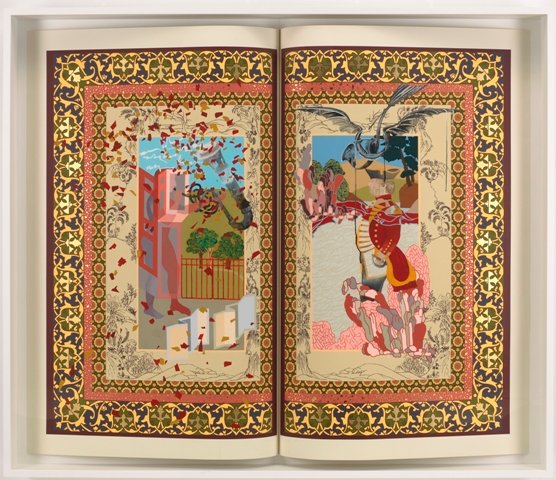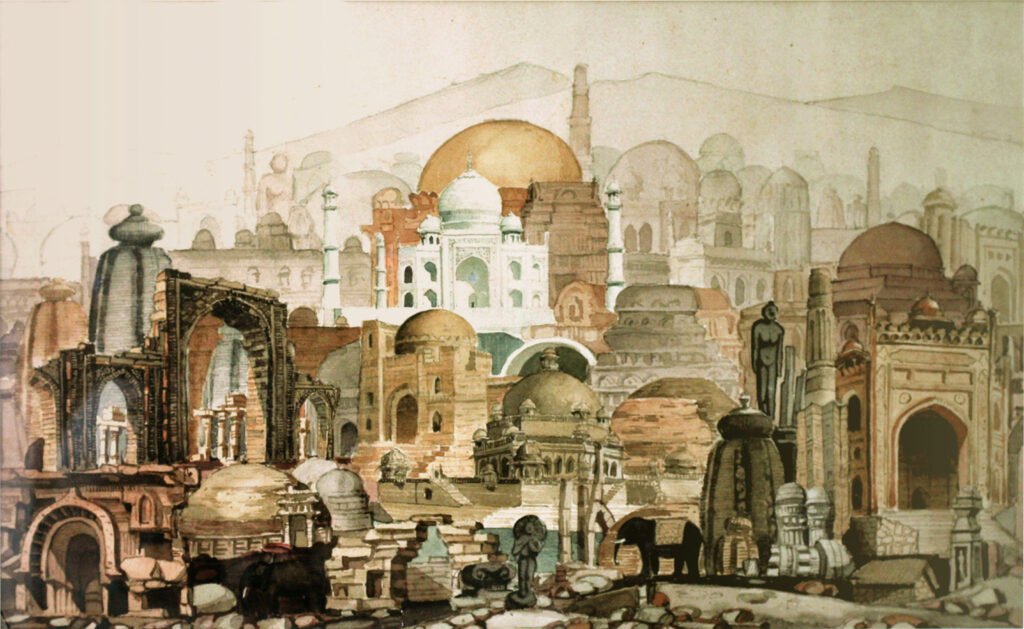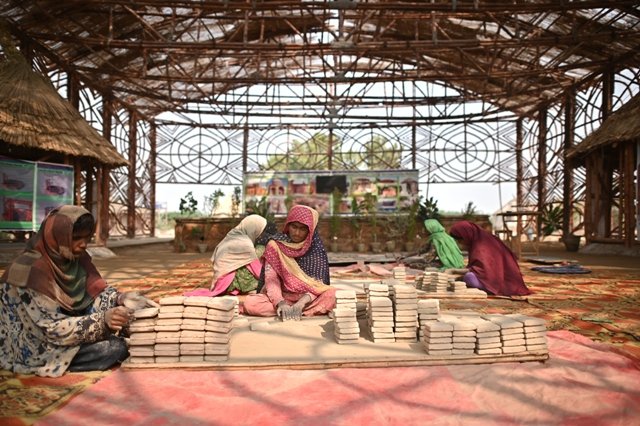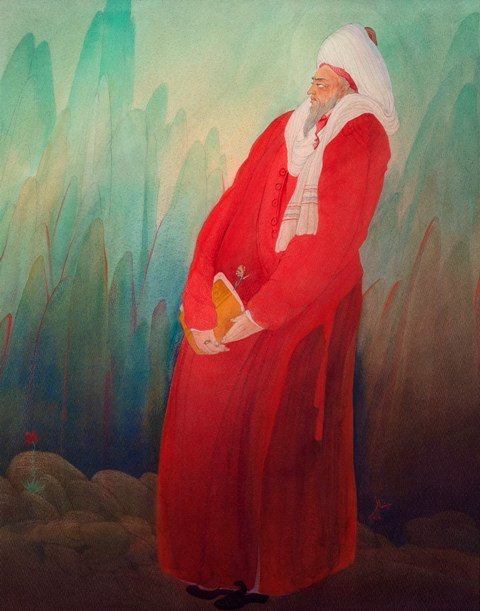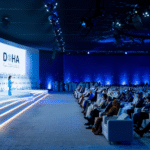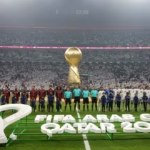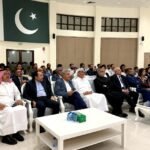Doha, 18 Oct. 2024 (NMOQ)
Qatar Museums in collaboration with Art Mill Museum will be organizing 'MANZAR: Art and Architecture' from Pakistan (1940 - Today) from 1st November - 31st January 2025.
Over 200 art works at 'MANZAR' will be presenting enormously diverse output of the painters, photographers, architects and others who have defined the array of narratives, histories, and contemporary perspectives of Pakistan’s cultures over the past eighty years. The artworks, programmes and events extend from the gallery spaces to the courtyard of the Palace of Sheikh Abdullah bin Jassim Al Thani for a broad immersion in Pakistani art and architecture.
The ground-breaking exhibition, designed by renowned architect Raza Ali Dada and unfolding across twelve sections, will reveal how artists responded to and reimagined international modernist movements.
The exhibition is curated by Caroline Hancock, Art Mill Museum Senior Curator of Modern and Contemporary Art; Aurélien Lemonier, Art Mill Museum Curator of Architecture, Design and Gardens; and Zarmeene Shah, independent curator, writer and Director of Graduate Studies at the Indus Valley School of Art and Architecture (IVS) in Karachi, with Art Mill Museum Senior Exhibition Project Manager Aebhric Coleman. Collaborators include Karachi-based researcher Noor Butt; Deena Hammam, Associate Curator for Learning and Audience Engagement, Art Mill Museum; and Farah Al Sidiky, Curatorial Researcher, Art Mill Museum. The exhibition is designed by architect Raza Ali Dada (Nayyar Ali Dada & Associates, Lahore).
MANZAR brings to light lesser-known global art histories and demonstrates how they weave into broader social and cultural trends. Through themed galleries dedicated to aesthetic experiments and calligraphy, nation-building, regionalism, neo-miniature, the urban vernacular, and the politics of land and water, among others, the exhibition presents a perspective on arts from Pakistan through unprecedented loans from public institutions such as the Alhamra Art Museum, Lahore and Pakistan National Council of the Arts, Islamabad; loans from private collections across Pakistan and in Dubai, London and New York; as well as works from Qatar Museums collections.
Mohammed Al Rumaihi, CEO of Qatar Museums, said, “By bringing the works of exceptional Pakistani artists and architects to Qatar, this exhibition affirms their contributions to their own nation and to the heritage of the world. We are especially proud to present this exhibition by the future Art Mill Museum in the galleries of the National Museum of Qatar, thereby emphasizing the close links between our nations, our histories and our futures. As with every Qatar Museums exhibition, this one is a bridge between cultures, and we are honoured to provide an international platform for these hugely deserving artistic movements.”
Catherine Grenier, Director of Concept for the future Art Mill Museum, said, 'This rigorous, scholarly exhibition looking at the significant practices of artists and architects from Pakistan and their connection to the wider history of modern and contemporary art reveals precisely how the future Art Mill Museum will be a vital centre for international modern and contemporary art. As MANZAR vibrantly demonstrates, our aim is to engage global art histories since 1850 through exhibitions grounded in multidisciplinary and non-hierarchical histories. Viewing these magnificent artworks will be a major discovery and a real emotional and artistic experience for the public'.
MANZAR is an Urdu and Arabic word meaning scene, view, landscape, or perspective. The exhibition begins with legendary artist Abdur Rahman Chughtai and Zainul Abedin, who worked during British rule (1858 and 1947), and continued their practices during joint West and East Pakistan. The Partition of 1947 was and still is a major subject for artists such as Anna Molka Ahmed, Zarina and Bani Abidi.
Organised loosely chronologically, the exhibition moves into aesthetic experiments by artists including Shakir Ali, Zubeida Agha, Murtaja Baseer and Sadequain, who developed highly personal modes of expression in urban centres including Karachi, Lahore, Dhaka and the twin cities of Rawalpindi and Islamabad.
Special attention is given to the local and foreign architects who transformed the country’s landscape and articulated the ambitions of its institutions through major building projects. The first phase of development involved the expertise of many modern Western architects, such as the French Michel Ecochard, who built the first university in Karachi; Konstantínos Doxiádis from Greece, who was in charge of planning the future capital Islamabad; and architects from US who contributed to the establishment of the nation-state's institutions, such as Louis Kahn, Richard Neutra and Edward Durell Stone.
MANZAR then focuses on Pakistan’s role in the debate on regionalism in architecture, with the backdrop of the Aga Khan Award for Architecture, held for the first time in Lahore in 1980. The works of major architects such as Nayyar Ali Dada and Kamil Khan Mumtaz from Lahore and Yasmeen Lari, Habib Fida Ali and Arif Hasan from Karachi will be presented in the context of this intellectual explosion and the cultural issues it raised. A final section is devoted to contemporary ecological and environmental issues.
Among the highlights by visual artists are works by Zahoor ul Akhlaq, Imran Mir and Rasheed Araeen, whose multidisciplinary approaches, involvement in educational initiatives, and theoretical writings challenged Western art history and traditions at home and internationally. Influential figures of different generations, such as Salima Hashmi, Quddus Mirza, Lala Rukh, Durriya Kazi, are represented. Alongside them are Rashid Rana, Imran Qureshi, Risham Syed and Hamra Abbas, who are known as key educators at the National College of Art (NCA) and Beaconhouse National University (BNU) in Lahore; and at Karachi University and Indus Valley School of Art and Architecture (IVS) in Karachi. In addition, newly filmed interviews and archival materials provide background information on the social, political, and artistic contexts through the decades.
The emergence at the start of the 1990s of what became known as the neo-miniature painting movement, which revisited traditional techniques and subjects, is introduced through some of the earliest works by Shahzia Sikander. Other important artists working in the diaspora whose works will be on view include Naiza Khan in London; Ruby Chishti, Huma Bhabha, Iftikhar and Elizabeth Dadi, Salman Toor in New York; Bani Abidi in Berlin; Basir Mahmood in Amsterdam; Seher Shah in Barcelona and Khadim Ali in Sydney.
Outdoor and indoor installations, as well as a film and video programme, continue the exhibition in the courtyard of the Palace of Sheikh Abdullah bin Jassim Al Thani, which sits at the heart of the Museum. Architect Yasmeen Lari and the Heritage Foundation of Pakistan will present three examples of log-system bamboo shelters developed as emergency open-source housing for flood victims. The fabric covering one of these shelters is designed by textile expert Noorjehan Bilgrami. A project by the collective Karachi La Jamia focuses on the environmental crisis in the province of Sindh, while Amin Gulgee reimagines a Mughal garden in a sculptural installation and artist-in-residence Omer Wasim will present a newly commissioned installation with drawings, a video, and a vitrine of ephemera. Sustainability and ecologies are at the heart of many of these contemporary projects.
Caroline Hancock, Aurélien Lemonier, and Zarmeene Shah said, 'This exhibition traces how artists and architects have forged diverse personal and political languages, in dialogue or disjunction with regional styles and international art and world histories. The interconnections with scenes, individuals and communities in the subcontinent and on a global scale are testament to the strength of art withstanding imposed or desired divisions and movements'.
Accompanying the exhibition will be performances, talks, screenings and other events that form part of a vibrant public programme. A catalogue designed by Kiran Ahmad will include essays by major art and architectural historians, educators and artists and architects from Pakistan and beyond.
The presentation of MANZAR coincides with the third edition of the Lahore Biennale, Of Mountains and Seas curated by John Tain (5 October–8 November 2024), with Raza Ali Dada advising on installation and exhibition design, and the fourth edition of the Karachi Biennial, What goes on? Risq | Risk (26 October–10 November 2024).

